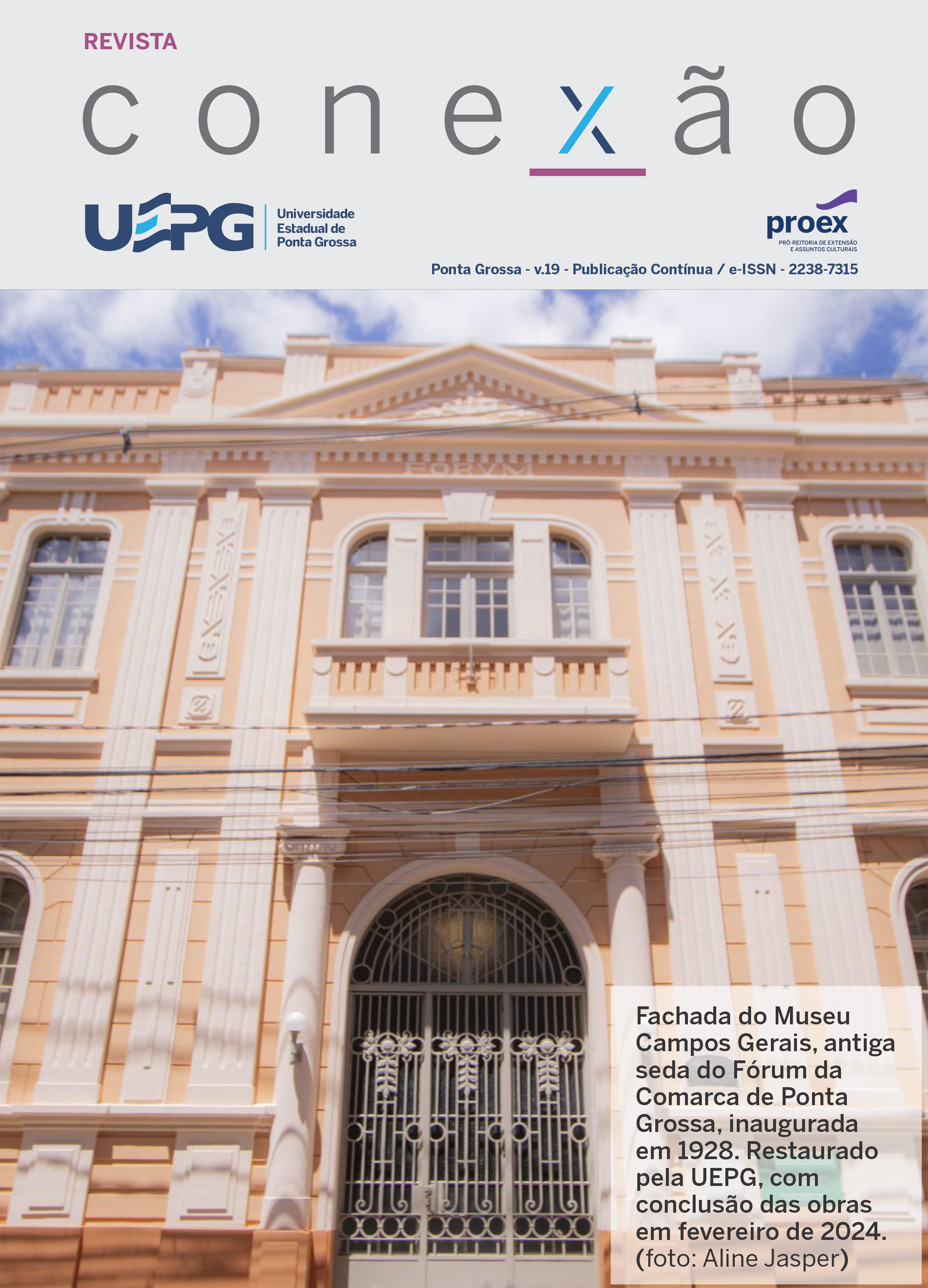DESENVOLVIMENTO INFANTIL EM MENORES DE DOIS ANOS ANTES E DURANTE A PANDEMIA DA COVID-19: ESTUDO TRANSVERSAL
DOI:
https://doi.org/10.5212/Rev.Conexao.v.20.23278.017Abstract
O estudo objetivou analisar o padrão de desenvolvimento infantil nos menores de dois anos acompanhados nas consultas de enfermagem antes e durante a pandemia da covid-19. Trata-se de pesquisa transversal, quantitativa, com dados secundários provenientes das consultas de enfermagem em puericultura, realizadas pelo projeto de extensão “Puericultura: promoção e proteção da infância saudável – Puppis”. A amostra foi composta por 62 crianças de 0 a 24 meses de vida, atendidas pelo projeto entre 2018 e 2022. Para a análise, utilizou-se o software SPSS e aplicaram-se testes Qui-quadrado de Pearson/Exato de Fisher e razão de prevalência. Dos 62 lactentes, 41,9% apresentaram alteração no desenvolvimento, cuja prevalência foi 64% menor no período pré-pandêmico (RP 0,36; IC 95% 0,06-0,59). As alterações do desenvolvimento infantil mostraram associação com o período pandêmico (p<0,003) e com o trabalho remunerado materno (p<0,025), apontando para a importância do ambiente e dos cuidados maternos para a promoção do desenvolvimento pleno infantil.
Descritores: Desenvolvimento infantil; Lactente; Pandemia; Covid-19; Relações Comunidade-Instituição; Enfermagem Pediátrica.
Downloads
Downloads
Pubblicato
Fascicolo
Sezione
Licenza

TQuesto lavoro è fornito con la licenza Creative Commons Attribuzione 4.0 Internazionale.
a) Os autores mantêm os direitos autorais e concedem à revista o direito de primeira publicação, com o trabalho simultaneamente licenciado sob a Creative Commons Attribution License que permite o compartilhamento do trabalho com reconhecimento da sua autoria e publicação inicial nesta revista.
b) Ao submeter um artigo à Revista Conexão UEPG e tê-lo aprovado os autores concordam em ceder, sem remuneração, os seguintes direitos à Revista: os direitos de primeira publicação e a permissão para que a Revista redistribua esse artigo e seus metadados aos serviços de indexação e referência que seus editores julguem apropriados.
c) Os leitores são livres para transferir, imprimir e utilizar os artigos publicados na Revista, desde que haja sempre menção explícita ao(s) autor (es) e à Revista Conexão UEPG e que não haja qualquer alteração no trabalho original. Qualquer outro uso dos textos precisa ser aprovado pelo(s) autor (es) e pela Revista.

Este obra está licenciado com uma Licença Creative Commons Atribuição 4.0 Internacional.





